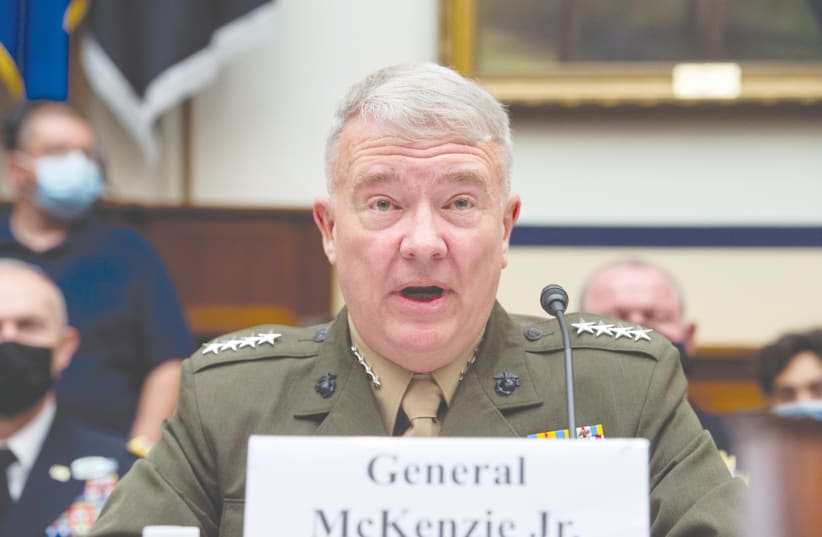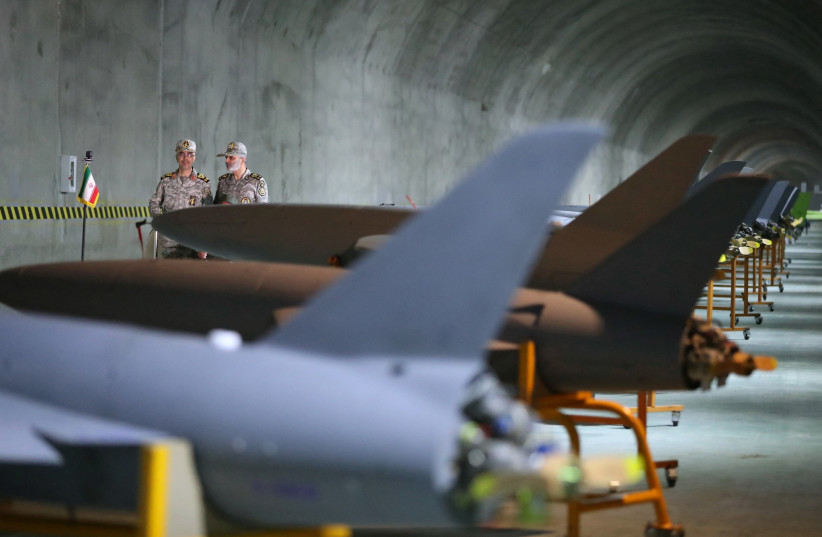While Iran is engaged in Vienna, talks seeking a way out to reopen the nuclear deal it signed with the six international powers (5+1) in 2015 and in talks with some of its neighbors to calm regional tensions, the Iranian regime demonstrated military strength to the world late last month, shortly before the International Atomic Energy Agency (IAEA) discussed Iran’s nuclear activities.
The regime has resorted to emphasizing its power in the area of drones, which already pose a significant threat to regional states and to the US itself. General Kenneth McKenzie Jr., commander of US Central Command, acknowledged this in testimony before Congress last year, saying that US air superiority in the Middle East has declined for the first time in decades.
What we are now hearing from Iranian reports of large, secret drone bases and Islamic Revolutionary Guard Corps (IRGC) missile sites reveals a major aspect that exacerbates the threat posed by Iran’s nuclear program.
The obvious question the observer asks concerns the significance of this remarkable correlation between the development of nuclear capabilities up to the bomb stage and the development of long-range missiles capable of carrying nuclear warheads.
What is the significance of this enormous expenditure on building secret underground facilities to store and launch missiles and drones, especially since storage sites include not only military bases near the Gulf and Israel (Horramabad base, about 1,400 km from Israel), but also bases like Tabriz (northwest), which make large geographic parts of eastern and central Europe operationally accessible to Iranian missiles?
The Iranians are clearly aiming to expand the capabilities of the Imam Ali base near Khorramabad, a military base located in western Iran, below Tabriz, and the closest geographically to Israel, some 1,400 km away, within range of the Iranian ballistic missiles guided by the Revolutionary Guards, who store Shahab-3 missiles at the base.
The danger of Iranian thought lies not only in its sole and absolute addiction to militarizing the country’s capabilities and turning them into huge arsenals of weapons. Here, it resembles the North Korean model.
The danger also lies in the fact that all these weapons systems are placed in the service of its expansionist project, that is, within reach of loyal militias in Yemen, Iraq, Syria and Lebanon. Here, Iran poses a more dangerous threat than North Korea. It goes further in terms of extending the threat to broader geographical areas than its borders.
The threat to security and stability lies directly in several countries. The biggest dilemma is that security dominates the thinking and behavior of the Iranian regime. The issue here is not pressure and sanctions or what Tehran says about it.
It boils down to channeling the resources of this large country into building missile cities and militarizing the state, in a constant anxiety that negatively affects the lives of the Iranian people, who are full of repressed anger, the biggest and most important factor in the insecurity of the Iranian regime.
Any observer understands that the incessant parades of Iranian forces, be they exercises, missile firings or videos from secret bases involving squadrons of drones with various capabilities and targets, are all designed to deter those they consider adversaries from attacking them or even trying to think seriously about it. In reality, however, it’s not just about deterrence.
We’ve all seen Iranian drones and missiles targeting vital oil facilities in Saudi Arabia and the UAE, and Iranian missiles launching strong and accurate strikes against US military bases in Iraq. This is not a question of military deterrence. They are a real threat to regional security and stability.
Iran invests most of its energy resources in developing its weapons capabilities. We all know that the Iranian regime often acts recklessly and with a high degree of risk when it feels threatened or when it wants to blackmail and put pressure on neighboring states to achieve certain goals.
This is the most dangerous scenario that has been associated with the behavior of the Iranian regime in recent years. There have been recent signs of impatience in Vienna among the US and its Western allies with Iran’s maneuvers. This was reflected in the IAEA decision, which implied criticism and accusations of Iran’s lack of cooperation with the IAEA.
Although the resolution takes the middle path and does not clearly and directly condemn Iran, the overwhelming adoption of the resolution certainly angers Tehran and reflects its inability to convince the international community of the integrity of its nuclear posture and conduct.
Instead of admitting its mistakes, reconsidering its position and providing a convincing explanation for the actions that raised the suspicions of IAEA inspectors about the existence of uranium particles that Tehran claims were “planted in an act of sabotage,” it has, as usual, resorted to escalation and threatening remarks.
He turned off IAEA surveillance cameras and developed plans to upgrade uranium enrichment, which, according to IAEA director-general Raphael Grossi, could be a fatal blow to efforts to revive the nuclear deal.
In fact, he says, our region could be on the verge of a new escalation of tensions if the Iranian approach persists to the causes of those tensions, whether regional interventions or the nuclear issue.
Based on the regime’s bad track, it is expected to resort to creating crises or a new escalation, especially since it recognizes the West’s particular sensitivity to any new tensions in the Gulf region, given the current international circumstances and the potential rise in oil prices.
The writer is a UAE political analyst and former Federal National Council candidate.

